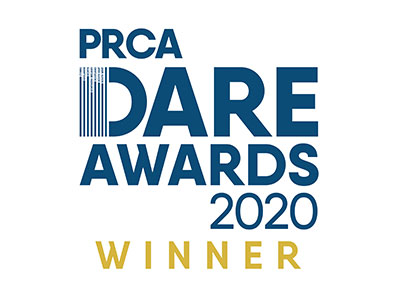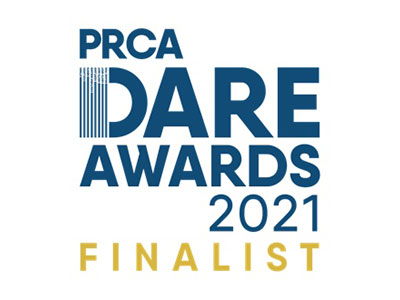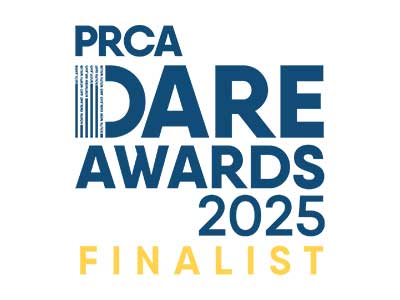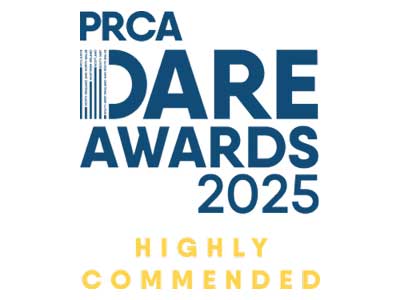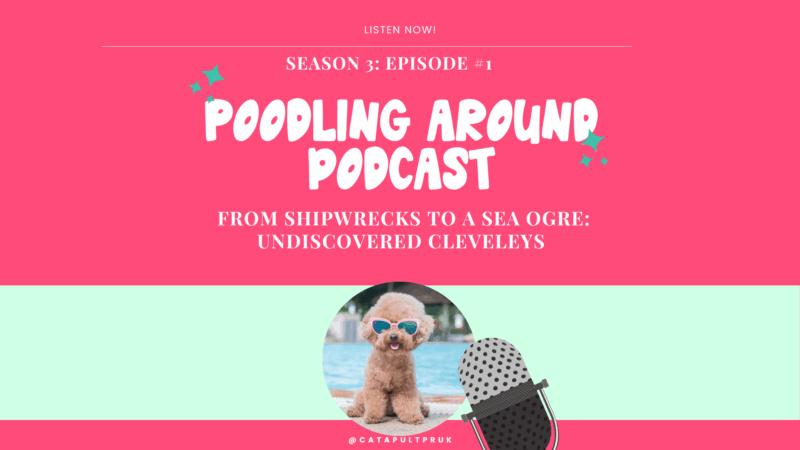
September 23rd, 2025
From Shipwrecks to a Sea Ogre: Undiscovered Cleveleys
Podcast: Play in new window | Download
Subscribe: RSS
Ever wondered about the story behind shipwrecks? Would you like your kids to walk along a beach and stumble across a sea ogre, sitting on the sand. With his menacing eyes and bad intentions, wouldn’t they love that.
In her latest tourism PR podcast at her travel, leisure and pet-themed podcast show, Poodling Around, managing director of Catapult PR, Jane Hunt, explains all about Cleveleys. As a Fylde Coast PR agency, based just a stone’s throw from Blackpool, Cleveleys is on Jane’s doorstep. In fact, the stretch of promenade she talks about played a major part in her childhood.
So Jane is well-placed to delve into Cleveleys’ rich tapestry of history, myths and legends. She does this by as providing insights into her very local coastal location of Cleveleys, in England’s north west. As she looks down the coast, whilst recording on the promenade at Cleveleys, she can actually see Blackpool Tower standing tall. Looking the other way, she can spot the Lake District coast.
Content of the tourism PR podcast
Jane walks listeners through some of the amazing facets to Cleveleys that she has largely discovered in the course of her travel PR at Catapult PR. Had it not been for promoting luxury apartments in Blackpool, through PR and content, she might never have known much about it herself! We all tend to overlook what is on our doorstep.
The tourism PR podcast focuses on the numerous shipwrecks that have occurred here. After all, this Irish Sea coastline can be wild in winter. Jane also explores the tales that surround them. She highlights how elements from these tales are still evidenced today. There are also some surprising facets mentioned. How about the time that this coastline suffered a tsunami?
However, Jane also gives parents some travel inspiration. This is by explaining all about the mystical world that can be explored by strolling along the promenade. Anyone doing this, whether an individual, couple or family, can soon find themselves hunting down intriguing sculptures. One of these is the sea ogre ‘baddy’. The kids will soon join his fanbase, despite his fearsome appearance. The fact he only appears when the tide is out is even more gripping.
But the tourism PR podcast also explains how visitors or locals can also track down his instrument of destruction. This is deployed as he seeks to carry out a dastardly plan to wreak havoc. Then there is more to discover. This includes the item that ultimately prevents him carrying out his dastardly plan, thanks to the bravery of one individual.
Summing up the tourism PR podcast
This tourism PR podcast is a real insight into Cleveleys and its past and present. And there are other things to track down too, if you listen to the podcast.
With lots of interesting facts to discover, this tourism PR podcast episode is an eye-opener. It will provide for for thought for those who only associate this part of the coastline with the Blackpool Illuminations. Or maybe with Blackpool’s attractions, like the Pleasure Beach and Tower.
It concludes with Jane pondering whether a message in a bottle would ever reach her favourite musician. That would, of course, be Axl Rose, and it would need to reach Malibu. She ends on that thought, debating whether it would actually just be washed up on the beach in nearby Fleetwood.
Transcript of the podcast
[00:17] Hi there, Poodling Arounders.
[00:18] How are you doing today?
[00:20] Well, today I’m going to help you poodle around a place that’s really close to where I live in Lancashire, in the northwest of the UK.
[00:29] This place is called Cleveleys and is situated on what is called the Fylde Coast,
[00:36] north of Blackpool and south of Fleetwood.
[00:39] In fact, I could drive to where I’m going to take you today in under 10 minutes.
[00:44] Now specifically I’m taking you to Cleveleys promenade.
[00:49] But if you don’t know what a.
[00:50] promenade is,
[00:51] it’s what we in the UK call the walkway alongside the beach.
[00:56] and promenades were places where people did just that, promenading, walking up and down in their Sunday best and taking in the seascape and the fresh air.
[01:08] Oh, I’ll also be taking you onto the beach but you don’t need your cossie, so don’t worry about that!
[01:16] Now the promenade continues beyond Cleveleys, right the way down into Blackpool, which with its three piers, its massive amusement complexes and world famous attractions like Blackpool Tower, the Winter Gardens and the Pleasure Beach amusement park.
[01:33] But let’s not get distracted by those or the world famous Blackpool Illuminations.
[01:39] Let’s focus on the very different promenade at Cleveleys and what we can see there.
[01:46] Now this is a little bit personal to me because it’s a part of the coastline on which I spent a lot of time as a child,
[01:54] Even when I didn’t live where I do now. My grandparents who didn’t come from this area would take me to a park at Anchorsholme, which is on the stretch of promenade that I’m taking you to today.
[02:07] There, there were trampolines, something I absolutely loved as a child and also different sized, rounded coloured stones and you could hop between.
[02:18] If you got to the top of
[02:19] one, you could declare you were king of the castle.
[02:22] Simple pleasures, but fantastic memories.
[02:26] There were swings too, and I can’t resist a swing even to this day.
[02:31] But I also love the Anchorsholme stretch of promenade because that’s where I would walk my beloved dog with a very bracing wind blowing off the Irish Sea.
[02:41] He’d get a whiff of salt in his nostrils and be really invigorated,
[02:46] literally pulling me or dragging me along the promenade in search of adventures.
[02:51] I suppose it was a little bit of doggy paradise with lots of fresh air and scents to enjoy.
[02:57] He absolutely loved it there. Getting excited the minute we pulled up in the car.
[03:04] Now I mentioned the Irish Sea and this is really important because this can be a really wild stretch of coastline in winter,
[03:13] with gales roaring in from Ireland and way beyond that, from the USA. In fact,
[03:19] Even though I’m a mile or two inland, I have to batten down the hatches quite a few times in winter as the wind draws in off the sea.
[03:30] And where there are wild winds, there are shipwrecks.
[03:34] And that’s where I’m going to start this little exploration of Cleveleys today,
[03:39] because in some ways, Cleveleys is our very own version of Pirates of the Caribbean’s Shipwreck Cove.
[03:47] As part of travel PR at my company, Catapult PR,
[03:51] I commissioned an independent research survey and this found that 14% of people have never seen a shipwreck on a beach.
[04:00] Cleveleys can help you put that right.
[04:04] The point at which I’m standing right now is what is known as the Shipwreck Memorial,
[04:09] and it’s on my beloved Anchorsholme stretch of the promenade.
[04:13] It’s a 4.6 metre tall rectangular structure with a porthole in the middle,
[04:19] and if you look through that, it frames a view of the beach perfectly.
[04:24] In fact, I’m going to stick my head right through it now. And there’s a seagull soaring overhead, sussing me out.
[04:30] This is a memorial to all of the ships that have been shipwrecked on the Fylde Coast, between St. Anne’s on Sea in the south and Fleetwood in the north.
[04:40] The name of each ship has been pierced through sheets of 15 millimetre thick Corten weathered steel,
[04:47] along with the date on which the ship was wrecked.
[04:50] It’s quite incredible.
[04:53] This is a bit of maritime heritage,
[04:55] because the very first ship on this memorial, unidentified by name, but later identified as the Santa Ana, was shipwrecked in 1643 and the last one as recently as 2008.
[05:09] The first ship was a Spanish ship and it caused a real stir when it ran aground just up the coast a short way from here.
[05:16] This period of time was in the midst of the Civil War and the ship was carrying guns intended for the use of Cromwell’s Parliamentarians.
[05:24] But the Royalists were very much evident in this area,
[05:27] and Lord Derby got to the marooned ship first,
[05:30] seizing the guns,
[05:32] taking the crew to Rossall Hall,
[05:34] now the Rossall Private School,
[05:36] but burning the boat.
[05:39] Fast forward to 2008 and there was no looting. But the Riverdance became a major tourism attraction in its own right, with thousands of people turning up to see it stranded on the beach.
[05:52] In total, there are hundreds of ships named on this memorial, with these, including Annie Reed, 1875, Cyrene 1892 and Pearl, 1895.
[06:03] There are four, I think, with Jane in their name, poor things. The Jane and Anne, 1920, the Jane Roper, 1860,
[06:11] the Hannah Jane, 1859, the Jane and Lenny, 1844, and the Nellie and Jane way back in 1822.
[06:19] But there are so many names and all are surrounded by words taken from the Seaman’s hymn.
[06:26] There’s a 1755 ship here which was called Travers,
[06:30] and this was notable because it carried a cargo of lace.
[06:34] Apparently lace curtains were to be found in local homes for years afterwards.
[06:39] A real “take what you can give nothing back” mentality, I guess,
[06:43] especially in the days when the excise men were thin on the ground.
[06:48] The same situation occurred when the Fanny ran aground in 1824 carrying red and black flannel.
[06:55] By 1839, when the crusader floundered, the authorities were more diligent. Looters were jailed for stealing the cargo of silk.
[07:04] Just going to wander away from the memorial a little because it’s a little bit blowy and blustery here.
[07:10] Right, where shall we continue?
[07:12] Well, it is said that in 1779, those in peril at sea helped prevent some local starvation following a poor potato harvest.
[07:23] Where was that ship? Can I spot it on there from here?
[07:26] Ah, yes, there it is. Ironically named Happy and travelling from Oporto in Portugal,
[07:33] it was carrying a cargo of peas which started to wash up on the shore. Once local men had rescued the crew,
[07:41] the peas were gathered up and distributed locally, allowing people to overcome the failure of the potato crop.
[07:48] The ship became known as the Pea Soup Wreck,
[07:52] so common was it for homes to be making pea soup.
[07:56] Perhaps it was fate.
[07:59] There was a real celebrity ship that
[08:00] was wrecked in 1897,
[08:03] Nelson’s flagship, HMS Foudroyant.
[08:06] You will find a blue plaque to that ship alongside North Pier in Blackpool.
[08:11] Other ships have been Norwegian, Russian, Portuguese,
[08:15] inbound from places like Barbados and Montreal,
[08:18] en route to others such as Antigua, Miramichi in Canada,
[08:23] Bombay and Genoa.
[08:25] Listen to those place names and it should tell you that some of the vessels were sadly part of the slave trade.
[08:32] Now, in 2008, Riverdance was removed fairly quickly from the beach and I sense your disappointment,
[08:39] but worry not, because all we have to do, if the tide is out, is, is walk a little way and we can see the remains of a ship that was wrecked right here, still embedded into the beach.
[08:52] This ship is listed on the memorial and was the Norwegian vessel the Abana.
[08:57] This was a ship sailing from Liverpool to Florida where it wanted to exchange ballast for timber.
[09:03] It was the night of the 22nd of December, 1894.
[09:08] No doubt a wild winter night,
[09:10] and the crew numbered 17.
[09:13] The story goes that in a bit of weather, shall we say, the captain mistook the lights on Blackpool Tower for a lighthouse and sailed far too close to North Pier.
[09:25] That left the ship in the throes of the North Shore drift, from which it could not escape.
[09:31] The currents carried it here onto the beach at Cleveleys.
[09:36] A landlord in what was called the Cleveleys Hotel raised the alarm, having spotted the stricken vessel at sea.
[09:44] Despite the need for some tricky manoeuvring,
[09:46] the lifeboat was launched and came to the crew’s rescue.
[09:51] The lifeboat also managed to rescue the
[09:53] ahip’s dog, and somehow the ship’s bell was also saved.
[09:58] Dog and bell were given to the landlord in thanks for his prompt action.
[10:03] The bell now hangs in St Andrew’s Church in Cleveleys.
[10:07] The Abana itself could not be saved.
[10:09] And neither could its cargo of ballast. That means that the hull of the
[10:13] boat is sunken into the sand, but perfectly visible from the promenade at low tide.
[10:19] You can walk out to it across the sand, but remember, this is the Irish Sea. This is an Irish Sea beach, not the Maldives.
[10:27] It’s wet, it’s muddy, and it’s set to ruin your trainers if you’re not careful.
[10:32] So get the wellies at the ready and lots of paper towel to clean
[10:35] them up with when you return.
[10:37] And do be careful. It’s easy for the sea to create channels around the wreck. That can mean you have to wade through deep water to get back to level sand.
[10:47] And always, always pay attention.
[10:49] Never take your eye off the tide,
[10:52] especially if it’s coming in, as you can be cut off on your way back to terra firma.
[10:58] Now we’re back on dry land,
[11:00] all of this is also true if you decide to walk out to say hello to the sea ogre.
[11:07] What? I hear you cry.
[11:09] Yes, it’s true. Cleveleys beach has its very own sea ogre,
[11:14] keeping a watchful eye on all who venture near.
[11:18] And this is the fascinating thing about Cleveleys Promenade and beach,
[11:22] because it gives you hints of a compelling story and that your kids will just love.
[11:28] Officially, it’s called the Mythic Art Coast Trail, which celebrates the myths and folklore of this stretch of coast and brings it to life through sculpture.
[11:38] Cleveleys has pretty much one main road running through it, Victoria Road West.
[11:44] And when you reach the end of this, you’ll find the Cleveleys Clock Shelter.
[11:49] This was built in the Art deco era in 1928,
[11:53] when this particular spot was popular for outdoor shows and entertainment.
[11:58] If you close your eyes, you can sort of imagine the gaiety of a past age.
[12:03] The clock shelter did exactly what it said on the tin.
[12:07] Being a shelter that carried clocks.
[12:10] It became known as the Birdcage or the four-faced liar,
[12:15] as the four hand-wound clocks that it housed never kept the same time.
[12:21] But that was no reason to steal them, which is probably what happened in the 1980s as they disappeared, never to be seen again.
[12:29] Opposite this little structural oddity is the start of the Mythic Art Coast Trail,
[12:35] marked by a rather impressive and graceful 10-metre-tall white aluminium sculpture called the Sea Swallows.
[12:45] Look to the top of the slightly curved sculpture and you will see the birds.
[12:51] This sculpture by Chris Brammall of Cumbria takes its name from the children’s storybook the Sea swallows, written by Gareth Thompson and illustrated by Hannah McGee.
[13:02] They were inspired by tales of the lost village of Singleton Thorpe.
[13:07] So what was all that about?
[13:10] Well, originally, Cleveleys was a clearing near a cliff with the forest of Amounderness surrounding it.
[13:17] This was around the time of the Domesday Book and it was known as Torentum.
[13:22] But let’s fast forward a little to 1555,
[13:26] as that is when a tsunami, or possibly a bog burst hit the area.
[13:31] The sea water rushed in and engulfed several villages,
[13:35] including Singleton Thorpe.
[13:38] And it also overpowered the forest of Amounderness.
[13:42] In fact, the sea never fully retreated thereafter
[13:46] Aad at low tide in spring, or after a storm or gale which has moved the sand around,
[13:52] you can nowadays see the remains of a petrified forest on the beach.
[13:58] Exposed tree trunks actually date back to 7000 BC.
[14:05] Now, all of this drama inspired Gareth Thompson to write the fictional work The Sea Swallows.
[14:12] In this story, a girl called Mary has to bravely battle a sea ogre who is intent on destroying the town by engulfing it with a great wave.
[14:22] His aim is to use his huge ogre’s paddle to summon up the wave.
[14:28] And the only way that Mary can prevent the consequences of the resulting tsunami is by acquiring a golden shell.
[14:36] Luckily, she outwits the ogre and saves the day.
[14:40] And thereafter, the sea swallows keep watch over the town,
[14:44] just as they’re doing now if you look to the top of the Sea Swallows monument.
[14:49] So now you understand why the Sea Swallow sculpture is here.
[14:53] It carries illustrations from the book created by Chinese artists,
[14:58] and a hint of the plot too, if you give it a close inspection.
[15:03] The Sea Ogre, however, as I said, sits out at sea rather grumpily.
[15:08] And when the tide is in is up to mischief in his submerged marine world, no doubt.
[15:15] When the tide retreats, however, he starts to become visible.
[15:21] He sits near a groyne – a wooden structure in the sand and he can blend in really well, despite being four metres tall.
[15:29] Why don’t all baddies do that, though?
[15:32] The kids will absolutely love to seek him out no doubt, with his red glowing eyes,
[15:37] his rather green appearance, if he’s not had a good wash, and a menacing stare.
[15:43] Guess what?
[15:44] 86% of people have never seen a beach sculpture appear and disappear with the movement of the tide.
[15:52] Track down our ogre in Cleveleys and
[15:55] you could be in elite company.
[15:58] But what would he be without his instrument of destruction?
[16:02] Well, just a 12 ton sculpture hand carved from limestone by the stonemason Adrian Wright, maybe.
[16:10] Worry not though, as his ogre’s paddle can be found nearby.
[16:14] You can’t really miss the paddle if you’re walking along the promenade as it’s 9.2 metres long,
[16:20] 1.7 metres wide and it’s a piece that weighs 1.5 tonnes.
[16:26] It’s formed from a tropical hardwood called purple heart timber and was created by the wood carver John Merrill.
[16:34] It carries the inscription “the Sea Ogre’s paddle drifted up to lie on the muddy sand like some strange offering”.
[16:44] So what next?
[16:46] Well, remember how I told you that Mary had to find the golden shell in order to save the town?
[16:52] Well, you have to find it too if it’s low tide,
[16:55] as Cleveleys also has that glorious feature on its beach.
[17:00] It’s viewable from the northern end of the promenade, though at high tide all.
[17:04] you will see is the very top.
[17:06] of it,
[17:06] 30 metres out into the sea.
[17:09] When the tide is out, its full 16.5 ton form can be viewed and you can even venture inside this 4 metre tall and 8 metre long masterpiece, formed to resemble a conch shell.
[17:23] If you do, you will discover words from the Sea Swallows etched inside.
[17:29] This was again created by Chris Brammall, to designs by Stephen Broadbent.
[17:34] You can carry on walking north and if you do, you will reach Rossall Beeach, full of sand and shingle and a great place to let your dog have fun.
[17:44] This is a place for beachcombing, for discovering delights such as mermaids purses,
[17:50] spotting driftwood that has a look of some sort of creature or mythical beast,
[17:55] and watching fishermen set up their rods awaiting the day’s catch.
[18:00] It’s a perfect place for a spot of mindfulness or for a hope of spotting porpoises, dolphins or seals at sea.
[18:10] Now, this may well have been where Singleton Thorpe was once to be found,
[18:15] as archaeologists have found evidence of medieval houses along the beach area.
[18:22] It’s said that only four people survived the tsunami and that they upped sticks and moved inland a fair few miles.
[18:30] The fact that there is a village called Singleton a little bit inland could make that a truth.
[18:37] Walk further and you’ll be heading towards Fleetwood, but let’s stay focused on Cleveleys.
[18:44] The town is on the tram track that runs to Blackpool and that can be interesting in itself,
[18:49] providing you with an atmospheric ride along the coast.
[18:53] However, do check out the two tram stations that you will encounter if you decide to walk towards Blackpool and the grey structure that is the Norbreck Castle Hotel.
[19:03] These tram stations of Bispham and Little Bispham are a little bit of history in themselves,
[19:09] reflecting the modern art movement of the 1930s.
[19:15] As you make this walk,
[19:16] you should be able to spot Blackpool Tower on the shoreline ahead.
[19:21] Look back the other way and you may be able to see the Lake District on a clear day.
[19:27] What you won’t see are the very many shipwrecks that are still laying off the coast and out at sea.
[19:34] Apparently these are serving a great purpose by supporting local marine life such as seahorses, velvet, spider and pea crabs,
[19:44] sea cucumbers and seven armed starfish.
[19:48] Lobsters call them home,
[19:50] as do critically endangered common skate which are using them for shelter and as a hunting ground.
[19:57] Our Fylde Coast shipwrecks actually act as vital ecosystems for marine species.
[20:05] If we look down from the Sea Swallow sculpture, we can see the town of Cleveleys congregated around Victoria Road East,
[20:13] which is a bustling high street that seems to thrive no matter what the weather at the sea end. It boasts various award-winning fish and chip eateries and you will also find butchers selling delicious pork pies,
[20:28] some independent shops and that really rare thing these days, a bank. With a plethora of cafes, it’s a place to which coaches still come.
[20:39] But the sad thing about that is that the itinerary is largely focused on shopping and refreshments.
[20:46] So it’s really easy to anger the ogre by ignoring his presence or to be one of the 86% of people who’ve never seen a shipwreck on the beach or a sculpture that disappears under the sea.
[20:59] It’s relatively likely that you will never see an ogre’s paddle or a mystical golden shell unless you seek them out.
[21:07] And you may go through life without viewing a submerged petrified forest in the sand.
[21:13] With all of these things I really feel should be on a bucket list,
[21:18] I hope you will maybe be enticed to Cleveleys one day and see them for yourself.
[21:23] That may be as part of a trip to Blackpool or when you are en route to the Lake District, perhaps.
[21:29] Or you could tack this on to a trip to Lytham Festival if you’re going to see one of the major international music acts that this relatively new musical festival attracts these days.
[21:41] But back to the promenade.
[21:43] For me, the Cleveleys to Norbreck stretch of promenade has always been about freedom,
[21:48] about blowing the cobwebs away. Certainly that’s the case today,
[21:52] about gathering thoughts in a location largely free of other people,
[21:57] especially if it’s a little bit blowy,
[21:59] and of contemplating the majesty of the powerful sea, whether it’s throwing up spray right across the promenade or behaving itself for once.
[22:08] As I look out today, there’s literally just me here and one lady walking her dog on the beach.
[22:15] When I stand here, I often wonder where a message in a bottle would reach if it left this wilder bit of coast that has been the undoing of so many vessels.
[22:25] Would a message to Axl Rose to invite him to come poodling around ever reach him in Malibu?
[22:31] I doubt it. But it would reach somewhere, wouldn’t it?
[22:34] Or would it just enter the North Shore, drift and end up on Fleetwood Beach?
[22:39] Who knows?
[22:42] But not knowing doesn’t really matter,
[22:44] because what is important is taking it all in,
[22:48] allowing the imagination to wander and question what the ogre is thinking today,
[22:53] whilst reflecting on how terrifying it must have been back in 1555 when that tsunami type event occurred.
[23:02] Cleveleys makes you contemplate life by the sea.
[23:06] I have absolutely yearned for this stretch of promenade at times when living and working in London and Bristol and whilst at university in Cambridge,
[23:15] places where there was no sea just across the road,
[23:19] wild, free and totally unpredictable.
[23:22] This stretch of coast is sort of at my very core.
[23:27] It’s definitely the reason why I love coastal places so much and why I could never live inland away from the coast.
[23:34] Once a marine baby, always a marine baby,
[23:39] So come and see it for yourself.
[23:41] English coastal places outside of Cornwall and Devon can have a bad reputation and poor image.
[23:47] But if you dive beneath their skin, there are so many riches to be found.
[23:52] And thanks to Cleveleys history, the perils of its shoreline and the Sea Swallows children’s book, there are plenty to discover.
[24:01] So until the next time, take very good care of yourself.
[24:05] Whether you are just up the coast in Morecambe, probably getting very excited about the new Eden Project development.
[24:12] Or you are poodling around the beach in Malibu trying to find a message in a bottle that I may have sent to you.
[24:19] One day, Axl.
[24:20] One day.








